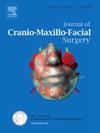MEST: Modified electrosclerotherapy to treat AVM (Extracranial Arterio-venous malformations). Better than BEST
IF 2.1
2区 医学
Q2 DENTISTRY, ORAL SURGERY & MEDICINE
引用次数: 0
Abstract
Arteriovenous Malformations (AVM) can present themselves in an ample clinical spectrum. They worsen over time, creating local complications such as ulceration, destruction, infection, pain, and severe bleeding.
Small focal AVMs can effectively be cured by surgery and/or endovascular techniques, whereas larger ones are of difficult management.
Accordingly, S3 AVMs (according to SECg staging) are particularly troublesome. Here, endovascular treatment is only episodically curative while surgery leads to significant structural and functional damage.
Electrochemotherapy is an established means to manage selected neoplasms. Recently it was successfully used to treat sclerotherapy-resistant or extensive low-flow vascular malformations (electrosclerotherapy, EST).
EST was only anectodically tried with AVMs. A conventional EST is unlikely to effectively have an AVM responding.
We conceived the Modified EST (MEST) protocol and started a pilot study.
Modification of conventional EST was done by administering bleomycin locally, under ultrasound guidance, in the tissues around the nidus. After 8 min, electroporation was started and covered the entire involved area.
MEST was adopted in 10 patients with S3 AVMs of the cervicofacial region.
Most patients received 2 sessions of MEST.
The response was significant, and the patients all had a complete or near-complete reduction in the size of the AVM. Excellent aesthetic results were achieved. On follow-up imaging the AVMs were not detectable.
Side effects were minor and easily managed.
Results were stable.
The results of the present study suggest that MEST may be the treatment of choice in selected AVMs.
However, a longer follow-up is needed to further evaluate the risk of recurrence.
求助全文
约1分钟内获得全文
求助全文
来源期刊
CiteScore
5.20
自引率
22.60%
发文量
117
审稿时长
70 days
期刊介绍:
The Journal of Cranio-Maxillofacial Surgery publishes articles covering all aspects of surgery of the head, face and jaw. Specific topics covered recently have included:
• Distraction osteogenesis
• Synthetic bone substitutes
• Fibroblast growth factors
• Fetal wound healing
• Skull base surgery
• Computer-assisted surgery
• Vascularized bone grafts

 求助内容:
求助内容: 应助结果提醒方式:
应助结果提醒方式:


